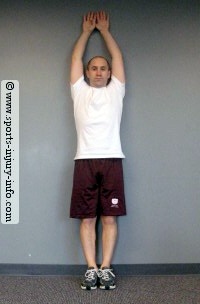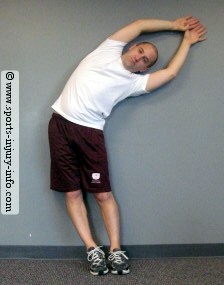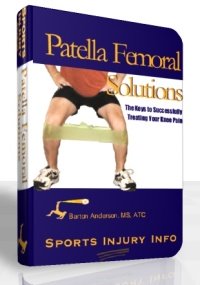Patella Femoral Syndrome Rehab: Improving Mobility
If you have been through patella femoral syndrome rehab, you may very well have been told that you have poor flexibility. Probably in your hamstrings. This may very well be the case. Even more important than hamstring flexibility is hip and lower back mobility. Unfortunately, these two areas are often overshadowed by the hamstrings, and are neglected during patella femoral rehab.What's Mobility Got To Do With It?
All of the joints in the body are connected to each other. If something happens at one joint, it will directly affect the joints both above and below. So mobility restrictions at the hips will affect the knee and the lower back.Usually if you have restrictions at one joint, then either the joint above or below will have excessive motion. Excessive motion at the knee (meaning the femur moves too much) can lead to patellar pain. Mobility restrictions at the hip usually come in the form of rotation deficits. I see many patients who have either internal or external rotation deficits. External is the most common.
Another common mobility restriction is within the lower back. Lateral, or sideways, bending, as well as rotation is often restricted on one or both sides. Again, restriction at one joint causes excess motion at another joint. So you will often see excessive motion at the knee or hips if your lower back is restricted.
What should patella femoral syndrome rehab focus on to fix these issues?
Improving Your Mobility

The Active Hamstring Stretch is a great way to work both on mobility of the hips, as well as hamstring flexibility.

Start by standing against a wall (one without pictures close by) and place your feet together about 4 inches from the wall. Put your hands overhead, and make sure that your low back, shoulder blades, head, and hands are all flat against the wall.

Next, keep everything flat against the wall and sideways as far as you can. You absolutely must keep all body parts touching the wall in order for this to work effectively. If you let one part come off of the wall, you will cause rotation and will not be stretching the correct areas.
You will feel a stretch along the side of your trunk. Try doing this back and forth 10 times on each side, trying to increase how far you bend each time.
Other stretching that is important for patella femoral syndrome include piriformis stretches, calf stretches, and hip flexor stretches.
A Complete Program for PFS

For a complete program to treat patella femoral syndrome, you need not only mobility exercises, but strengthening and balance exercises as well. I offer all of these in a comprehensive patella femoral rehabilitation program called Patella Femoral Solutions.
If you are suffering from knee pain, this is the answer you are looking for. It will walk you step by step through the BEST exercises to treat your knee pain. Imagine a life without pain when you play sports, walk up the stairs, or stand for too long. It is possible.
Summary
Hamstring tightness is just one area of mobility restriction with patella femoral syndrome. Even though it is the most commonly treated mobility restriction, it may not be the most important area to focus on when treating this patella femoral pain. Make sure that you address your hips and lower back to get the best result with your patella femoral syndrome rehabilitation.Didn't find what you were looking for? Search SII for more information...
Running Pain Solutions
Written for Runners by a runner, you'll learn a holistic approach to improving mobility, restoring normal movement and muscle activation patterns, and restoring the body and mind connection.
This Kindle Book contains a step by step program to keep you running pain free. Included are detailed instructions and illustrations for exercises to improve mobility, balance, neuromuscular control, strength and endurance. Only $7.49!
Get Your Copy Today!









